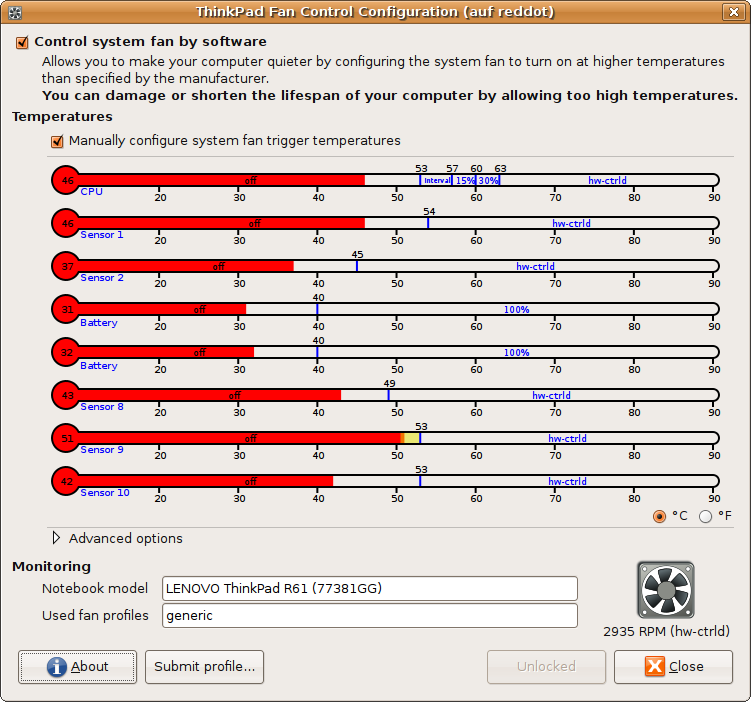

The sensors in use should indicate whether or not they are calibrated (in which case they should be shut down). In any case, instead of doing the same for previous versions such as 13.04, you should make the following changes. This can be done via Ubuntu 13.10 by using the following method. Thinkfan can be found in the Ubuntu software repositories, but it is very simple to configure. How do I control fan speed at home? Thinkfan software (thinkpad_acpi) can do this for your ThinkPad. To do this, you need to edit the kernel’s configuration file and enable the appropriate options.

Another way is to use the kernel’s built-in fan control features. One way is to use a program like lm_sensors, which can be used to detect and control fan speeds. How Do I Control System Fans In Linux?Ĭredit: There are a few ways to control system fans in Linux. In Linux, run the sensors command to determine CPU and GPU temperatures, as well as fan speed. The sensor command can be run from the sudo sensors command. Install the lm-sensors package using the package manager. All of these programs can be used to monitor the status of a system’s cooling fan and to control the speed of some or all of the fans in a system. fancontrol is a graphical program that can be used to control the speed of fans in a system. Yet another program that can be used to control fan speed in Linux is fancontrol. lm-sensors is a command-line program that can be used to view information from sensors in a system, including fan speed. Another popular program for controlling fans in Linux is lm-sensors. SpeedFan can be used to monitor the speed of all fans in a system, as well as to control the speed of some fans. There are a few different programs that can be used to monitor and control fans in Linux.

The second way to check the status of a system’s cooling fan is to install a third- party fan control program. Many BIOSes have options for monitoring fan speed and status. There are a few ways to check the status of a system’s cooling fan in Linux. If a fan fails or is not able to adequately cool a system, it can lead to hardware damage or instability. A system’s cooling fan is essential for keeping its components from overheating.


 0 kommentar(er)
0 kommentar(er)
